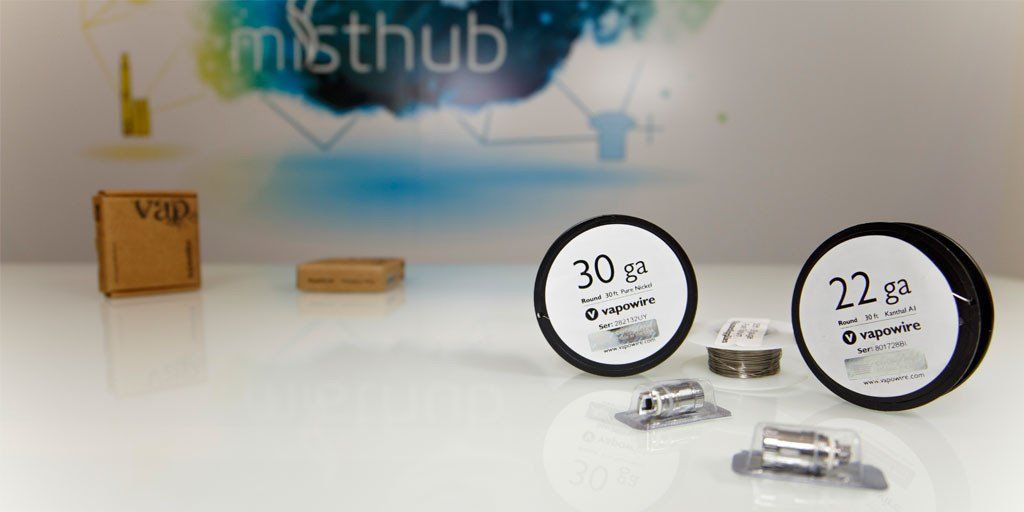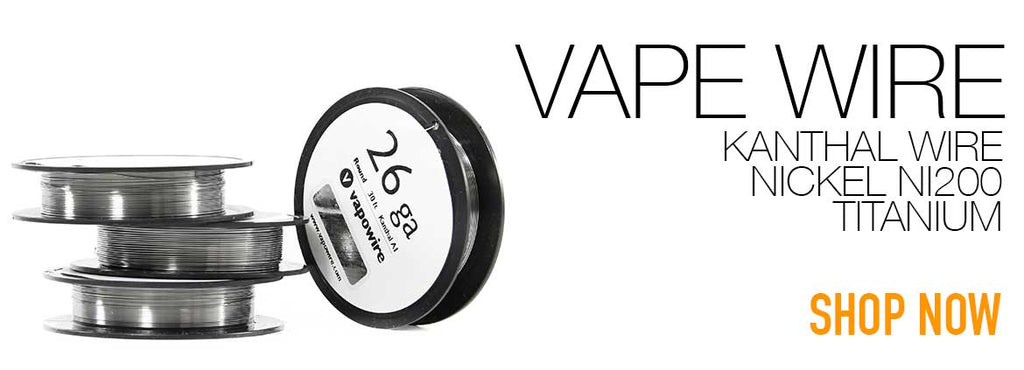
Tutorial: NiChrome vs Ni-200 vs Titanium vs Kanthal vs Stainless Steel Vape Wire
Welcome to Misthub’s Guide to different wires for building coils. Here we will discuss the differences between NiChrome, Ni-200, Titanium, Kanthal and Stainless Steel. Although these wires will all serve the same purpose, there are some fundamental differences that place them worlds apart. It is because of this that we’re going to dive deep into the science of these different types of wire and help you decide which wire will be best for you and your build.
Nickel-Chromium Vape Wire
NiChrome was the metal that started it all. It became well known and widely used back in 1905 when scientists realized it possessed anti-oxidizing properties, allowing the metal to function at high heats without being damaged through oxidation. NiChrome is a resistance wire that is popularly used in most electric heating elements, hot-wire foam cutters as well as household appliances and tools. Due to its ability to rapidly heat quickly with minimal ramp-up time, NiChrome has become the wire of choice for a vast majority of e-cigarette coils that come out of China as well as the preferred wire for cloud-chasing builds. When compared to Kanthal, NiChrome has a lower melting temperature as well as a lower maximum operating temperature. Simply put, this means that the life expectancy of a NiChrome coil will typically be shorter than that of a Kanthal coil. Worry not, these temperatures are negligible as most devices will not exceed the melting point of either metal. In comparison, they both support similar features despite NiChrome heating up faster and Kanthal having a longer life expectancy. If you suffer from a Nickel allergy, you may want to consider Kanthal as it is made from Iron-Chromim-Aluminum and does not contain Nickel.
Iron-Chomium-Aluminum Vape Wire
Kanthal resistance wire famously made its appearance in the e-cig world shortly after Nichrome and quickly became an instant-favorite amongst coil builders around the world. Due to its low cost, wide availability and the fact that it can be bought in multiple gauges, Kanthal wire provides endless combinations of different sized coils supporting different resistances for any style of vape. Kanthal has a slightly higher maximum operating temperature as well as a higher melting temperature than Nichrome, giving it a slightly longer lifespan than Nichrome. Some people claim that Kanthal wire puts off a slightly metallic taste due to the Iron composition, whereas others claim it does not. All in all, the functionality of Kanthal wire makes this an easy choice for beginners that are interested in learning how to build.
Pure Titanium Vape Wire
Titanium wire is still relatively new on the market and is used in many sub-ohm tank coil heads for Temperature Control. It is considerably stronger than Ni200, making it much easier to work with. The resistance of Titanium is about double that of Ni200, allowing you to use considerably less wraps compared to Nickel when reaching your target resistance. A concern worth noting for Titanium is the fact that it can heat up to a point of ignition. If the metal combusts, you will see a flame that no fire extinguisher can put out; in which case you just have to let it burn out. Also worth noting is the formation of Titanium Dioxide which can be harmful to your health if inhaled. The good news is that Titanium Dioxide only forms in temperatures around 1,200°F (600°C). This may seem like a lot, just remember that a brightly glowing orange coil can easily exceed temperatures up to 1,300°F. A simple solution is to not glow your coils and you’ll never have to worry about combustion or Titanium Dioxide. If you see any kind of white powder forming around your coil, please be sure to dispose of the wire and wrap a new coil. Titanium Dioxide is no joke and can produce some serious side-effects if ingested for an extended period of time. If you are unsure or have any doubt about your coil, simply throw it away and start a new.
Pure Nickel Vape Wire
Ni200 is made of pure Nickel and has an extremely high temperature coefficient. This is precisely the reason why the guys at Evolv (famous for their DNA mod chips) decided to use Ni200 wire for the first Temperature Control mod. Nickel wire is very soft and springy, making it more difficult to work with when compared to Kanthal or Titanium. When wrapping Nickel, it’s a good idea to space the wraps apart so the heat is evenly distributed throughout the length of the wire. If there are any wraps in the coil that are touching each other, you’ve created a potential hotspot that can cause the coil to short. Because of this, many people have started twisting the wire before they make their coil. This allows for equal heat distribution (if done correctly) with tight wraps; however, it can be time consuming. For this reason some people consider Ni200 to be problematic, whereas other people swear by it to be the best metal for Temperature Control devices.




Leave a comment